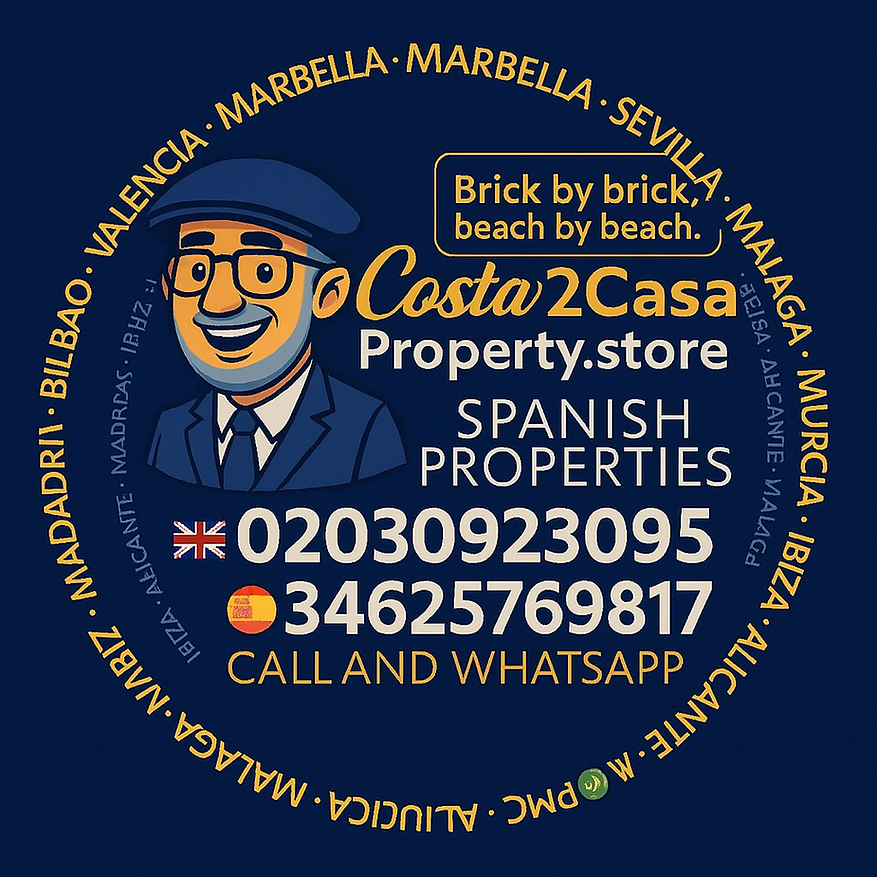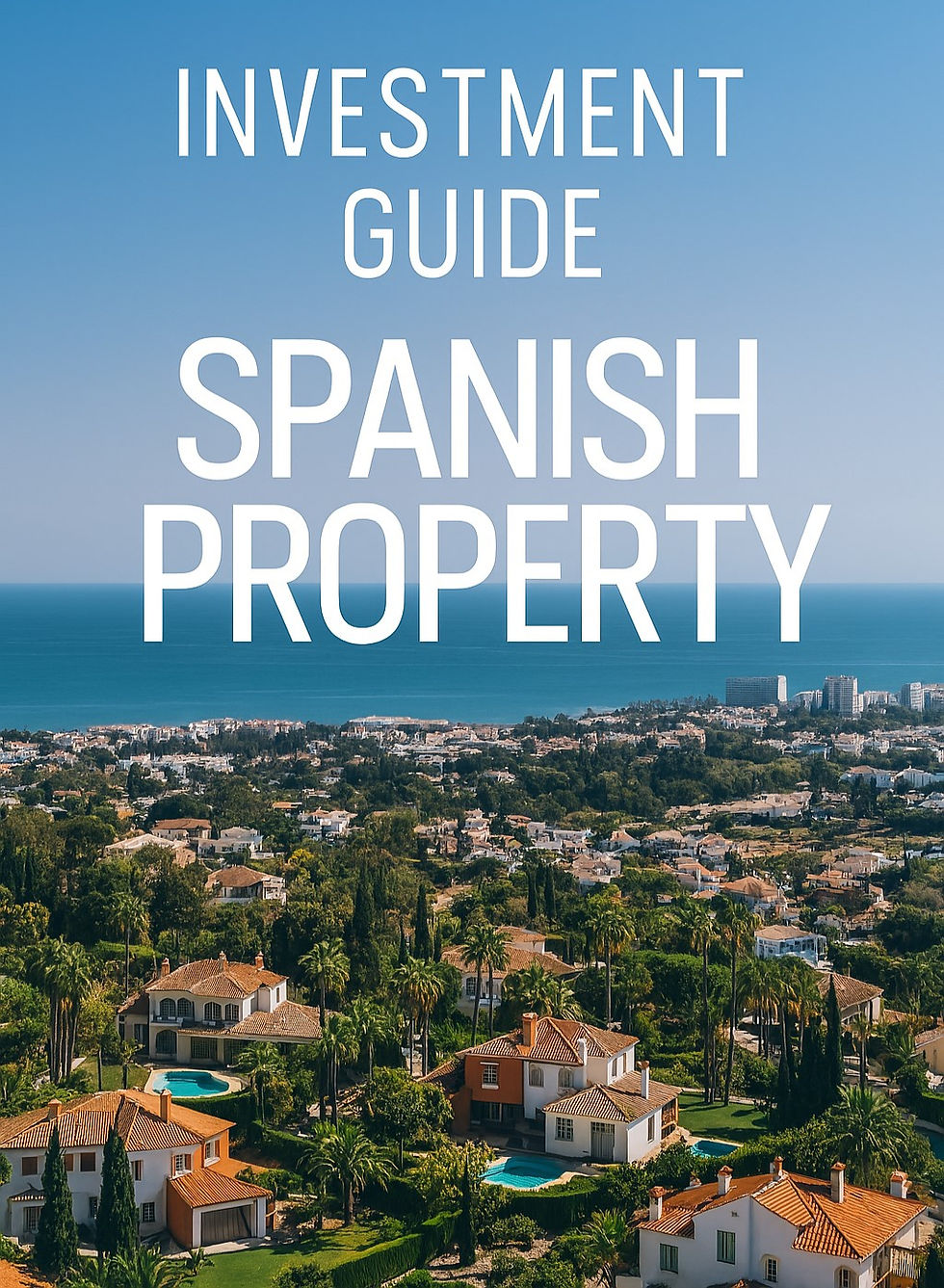Property Purchase Steps in Spain Simplified
- K Read
- Sep 16
- 4 min read
Buying a property in Spain is an exciting adventure. Whether you dream of a sunny villa on the coast or a cosy apartment in a bustling city, the process can feel overwhelming at first. But don’t worry! I’m here to walk you through the steps to buy Spanish property in a clear and friendly way. By the end, you’ll feel confident and ready to take the plunge.
Spain offers a fantastic lifestyle, beautiful landscapes, and a welcoming culture. However, buying property abroad means understanding a few local rules and customs. Let’s break it down into easy, manageable parts so you can enjoy the journey without stress.
Understanding the Steps to Buy Spanish Property
Before diving into the paperwork and viewings, it’s important to know the general path you’ll follow. Here’s a quick overview of the main steps:
Research and Budgeting - Decide where you want to buy and how much you can spend.
Find a Property - Use trusted agents or websites to find homes that fit your needs.
Legal Checks and NIE Number - Get your Spanish tax ID (NIE) and ensure the property is legally sound.
Make an Offer and Sign a Contract - Agree on a price and sign a preliminary contract.
Finalise the Purchase - Complete the sale with a notary and register the property.
Each step has its own details, but knowing this roadmap helps you stay organised and calm.

What is the Process of Buying Property?
Let’s explore the process in more detail. This will give you a clearer picture of what to expect at each stage.
Step 1: Research and Budgeting
Start by thinking about your ideal location. Do you want to be near the beach, in a lively city, or somewhere quiet in the countryside? Spain has many regions, each with its own charm and price range.
Set a realistic budget. Remember to include extra costs like taxes, legal fees, and notary charges. These can add around 10-15% to the purchase price. It’s smart to get pre-approved for a mortgage if you need one. This way, you know exactly how much you can borrow.
Step 2: Finding the Right Property
Once you know your budget and location, start searching. Use reputable real estate agents who specialise in helping international buyers. They can guide you to properties that match your criteria and arrange viewings.
Don’t rush. Visit several properties to get a feel for what’s available. Take notes and photos to compare later. Ask questions about the neighbourhood, local amenities, and any potential issues with the property.
Step 3: Legal Checks and Getting Your NIE Number
Before making an offer, you need a Spanish NIE number. This is a tax identification number required for any property transaction. You can apply for it at a Spanish police station or through the Spanish consulate in your home country.
Next, your lawyer or agent should check the property’s legal status. This includes confirming ownership, checking for debts or liens, and ensuring the property complies with local regulations. This step protects you from surprises later.
Step 4: Making an Offer and Signing the Contract
When you find the right property, it’s time to make an offer. If the seller accepts, you’ll sign a “Contrato de Arras” or reservation contract. This contract usually requires a deposit (around 10% of the purchase price) to secure the property.
This contract outlines the terms of the sale, including the price, timeline, and any conditions. It’s important to have a lawyer review this document to make sure everything is clear and fair.
Step 5: Finalising the Purchase
The final step is signing the “Escritura de Compraventa” (deed of sale) before a notary. This official document transfers ownership from the seller to you.
After signing, you’ll pay the remaining balance, plus taxes and fees. The notary will register the property in your name at the Land Registry. Once registered, you are the official owner!

Tips to Make Your Property Purchase Smooth and Easy
Buying property abroad can be tricky, but a few simple tips can make all the difference.
Work with trusted professionals: A good real estate agent, lawyer, and notary are your best friends. They know the local market and legal system.
Be patient: Don’t rush decisions. Take your time to understand each step.
Visit in person: Photos are helpful, but seeing the property and area yourself is invaluable.
Understand the costs: Besides the price, budget for taxes (usually 8-10%), notary fees, and registration costs.
Ask questions: No question is too small. It’s better to be informed than surprised later.
If you want a personalised guide through the property purchase steps, consider booking a consultation with experts who specialise in helping international buyers.
What Happens After You Buy?
Owning property in Spain is just the beginning. Here’s what to expect next:
Utilities and Services: Set up water, electricity, internet, and community fees if applicable.
Property Taxes: You’ll need to pay annual property taxes (IBI) and possibly other local taxes.
Maintenance: Keep your property in good shape, especially if it’s a holiday home.
Rental Opportunities: If you plan to rent out your property, check local regulations and get the right permissions.
Owning a home in Spain opens up wonderful opportunities to enjoy the lifestyle, culture, and climate. It’s a rewarding experience that’s worth the effort.

Ready to Start Your Spanish Property Journey?
Buying property in Spain doesn’t have to be complicated. With the right information and support, you can navigate the process smoothly and confidently. Remember, every step brings you closer to your dream home under the Spanish sun.
If you want to make your journey even easier, check out the property purchase steps service. It’s designed to help international buyers like you feel secure and informed every step of the way.
Spain is waiting to welcome you home!






Comments